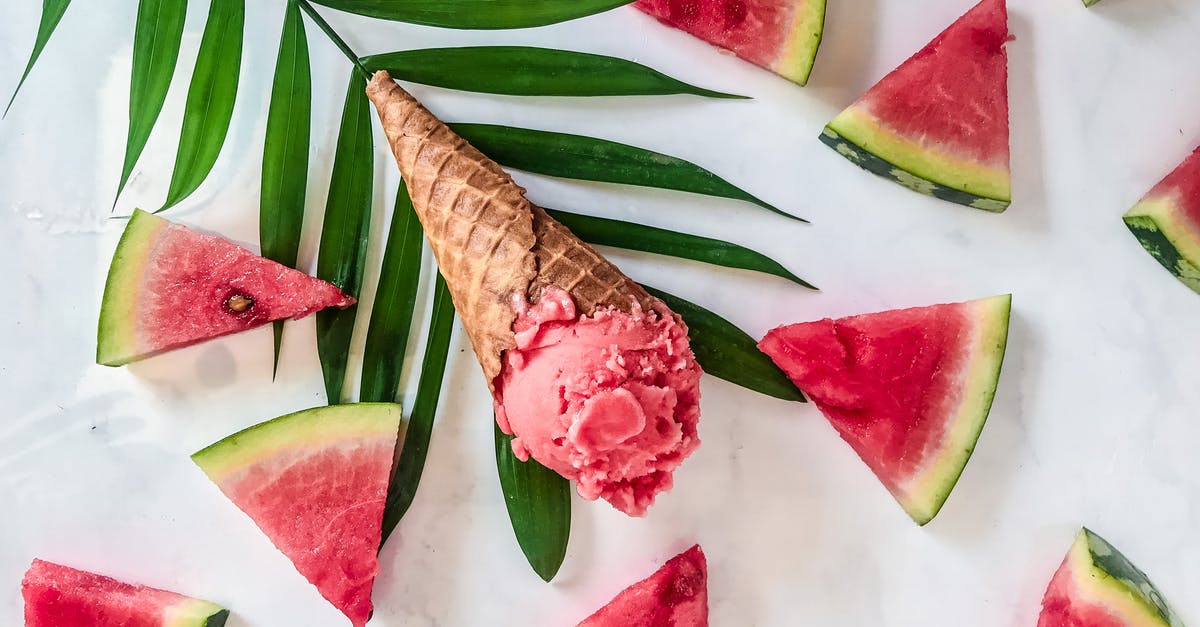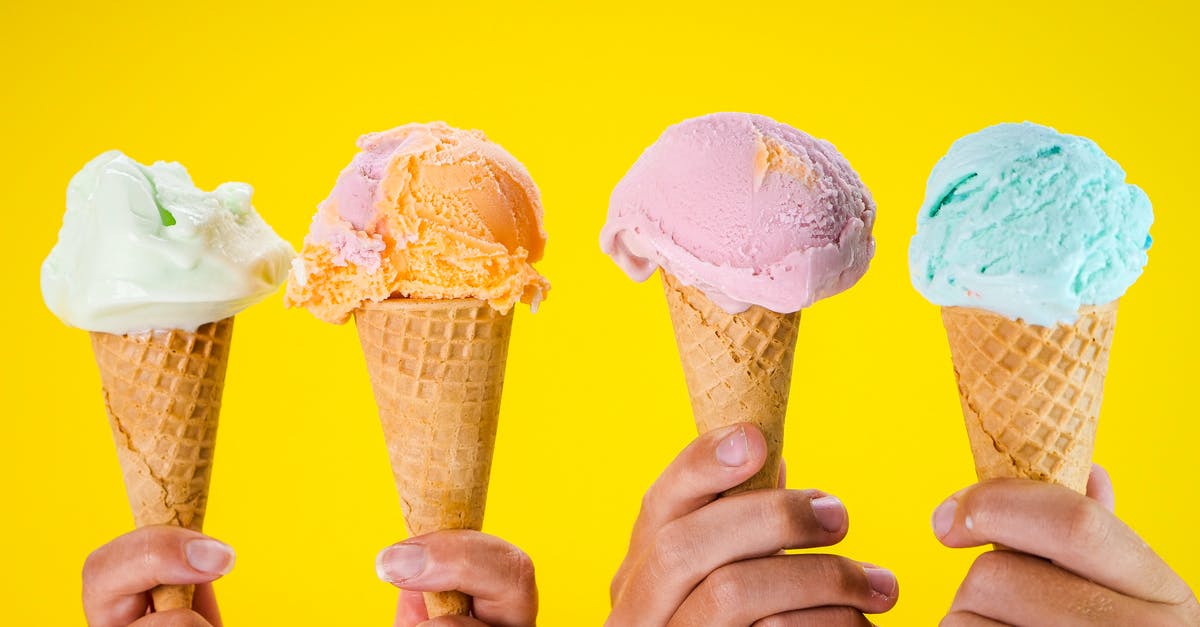Why does frozen food still have an expiration date?

In a below 0°C environment, no bacteria or fungi may grow. How could time "spoil" frozen food?
edit: More concretely, I have lobsters and pizza dough that stayed really long in my freezer, are they completely useless now?
Best Answer
Frozen food does spoil over time. Much slower than even just thawed, sure, but don't expect that something that would spoil within few days at just above 0°C will last with unchanged quality for years at -18°C (even if it were always at that temperature). There are also physical and chemical effects contributing to spoiling of food.
Freezing refers to water forming ice. The spoiling of the aqueous parts (water and the stuff dissolved in water) is extremely slowed down due to the phase change liquid -> frozen.
But food is not only water, and e.g. lipids (fatty, oily) parts are much less affected by the lower temperature. The lipids in food are are often mixtures of fats and oils that get slushy and finally more and more still in the temperature range we're talking about. E.g. squalene (which is fairly abundant in some fish oils) has a freezing point of -75 °C - having such components helps keeping the mixture from freezing (crystallizing).
Lipids can go rancid by hydrolysis and/or oxidation. This is slower in cold temperatures (as a rule of thumb, for lipid oxidation I'd expect maybe an order of magnitude slower for 10 °C lower storage temp. So 3 weeks instead of 2 days. If you manage consistently -18 °C instead of +2 °C, maybe several months, but not years. Gas-tight containers help against oxidation by oxygen from the air - but it is extremely difficult to seal food really air-tight at a time scale of several months. Hydrolysis would be hampered by forming of ice, so the prediction of the time scale isn't that straightforward. In particular glycerol (e.g. from hydrolysis of lipid) will act as anti-freeze and keep some tiny fraction of the water in a liquid phase where it can help hydrolyze further lipids.
Fish need to have lipids that stay suitably liquid at water temperature (i.e. for some fish even around 0 °C). Thus, while tallow is more-or-less solid already at +20°C, fish oils are liquid at close to 0°C. Which means that at the same -18 °C both oxidation and hydrolysis will be faster in cold water fatty fish than in the meat of warm-blooded animals.
Health considerations: hydrolysis is affects the sensory quality, but AFAIK does not have health concerns (triglycerides are anyways hydrolyzed in our lipid metabolism).
Oxidation of (unsaturated) fatty acids OTOH leads to so-called lipid oxidation products (duh!). They include mutagenic and carcinogenic substances. BUT: this is also something that happens inside our body during lipid metabolism, and sufficiently often that we do keep detoxification pathways up and running. We includes the animals of whom we're discussing the meat here. This detoxification uses antioxidants (that's why they are healthy), and in the cells they are stored together with antioxidants (e.g. vitamin E). Before lipid oxidation (and the formation of potentially unhealthy components) starts, the antioxidants are used up - that's their biochemical purpose. In terms of health effects, in this stage, we're not getting as much of the particularly healthy antioxidants out of this food as we'd have gotten by eating that meat earlier, but also there aren't yet particularly unhealthy compounds in it.
All in all, I'd say also the oxidative rancidity is not very concering in this scenario:- we're quite good at detecting rancid fat (also from hydrolysis) so the risk of unknowingly eating dangerous amounts is low.
- The lack of antioxidants from this piece of food can quite easily be compensated by adding some more fresh veggies or nuts to the meal. In addition, the potentially toxic effects from possible lipid oxidation products can to a certain extent be counteracted by eating yet more antioxidants. Add another big spoon of broccoli with some fresh nuts or almonds to your meal.
- If you're frying meat/fish in oil, that may be a far more important source of lipid oxidation products in your diet.
Volatile substances (which are important for smell/"taste") also have lower vapor pressure but it's still above zero. Getting a container gas tight at a time scale of months is difficult. In the end, after a year or so in the freezer is is quite possible that all the food acquires the average freezer smell/taste.
Health effects well, we don't know what substances float around in your freezer. But the total amount you eat probably doesn't differ much whether you let one piece of meat "soak" in that atmosphere for a years vs. 12 times eating a piece of meat that was in there for a month.
If you flash-freeze food, there will be tiny ice crystals, but given enough time they will grow (depending on temperature again, the colder the slower, and the more gas volume the more). This has two consequences for the food: the crystals can grow so that they damage the cell walls (in fish/meat or vegetables): the thawed meat is noticeably more tender, for vegetables we call the same effect mushy and often do not appreciate is as much. (Freezing in a home freezer is sufficiently slow to get this effect)
The 2nd effect is that even at these low temperatures, water evaporates (that is part of how the re-crystallization processes work), and pure water crystals form. Over time and helped by temperature changes (due to opening, putting in new stuff, cooling cycles), pure water tends to crystallize outside the food at the wall of the container. This water comes from inside the food, which is dehydated (freezer burn).
Health effects none, or only indirect ones: destroyed cell walls may mean that microbial spoiling is faster once the food is thawed. But here again the time at -18 °C makes hardly any difference compared to the slowish process of freezing in a household freezer.
Dehydration/freezer burn also causes the protein to precipitate but that doesn't cause health concerns. And cooking/frying anyways leads to even irreversible protein denaturation (denaturation from drying may even be reversible).
In terms of packaging, vaccum sealing (in a material that is has low permeability for oxygen - not all plastics are gas tight on the time scales we're talking about, and permeability varies for different gases) helps. Frozen fish is sold glazed with a protective ice coating that also helps, both against freeze burn and by adding another barrier for oxygen.
below 0C environment, no bacteria or fungi may grow
I wouldn't bet on this as a general fact of life, see psychrophile microorganisms. But for the food-relevant microorganisms it is a good approximation.
For your lobster, all that I explained about cold water fish will apply. It may not taste well any more. In terms of microbiological spoilage, months at -18 °C matter hardly at all compared to the time spent not or incompletely frozen.
For the yeast (pizza) dough, while you can freeze yeast dough (dried yeast is usually produced by a freeze drying process), yeast can also die and your home freezing process may not be as nice to the yeast as an industrial process optimized to keep it "alive". But you'll notice if it doesn't rise when thawed - and as @GdD points out, you may not need it to rise after thawing.
If there are freeze burned spots, you may get away with thorough kneading like when the surface of the resting dough accidentally dried a bit. Also, you can check the smell before putting any toppings.
Pictures about "Why does frozen food still have an expiration date?"



Quick Answer about "Why does frozen food still have an expiration date?"
Items from the freezer section of the supermarket are safe to eat indefinitely. They have expiration dates because they won't taste good forever; flavor and texture break down over time.Safe Food FAQs - How Long Are Frozen Foods Good?
More answers regarding why does frozen food still have an expiration date?
Answer 2
They are most likely "best by" dates, meaning quality may suffer, but they remain safe.
Answer 3
Why do frozen food still have expiration date?
The answer to that is simple: Everything (even salt, and bottled water?!) has an expiry date. That's because the law says so (at least in most industrial countries).
Yes, the water molecules in that bottle are a few billion years old, and the water has been in that same state within the aquifer for the last 11,000 years, until someone filled it into a glass bottle. Sure enough, in two years from now it will be unusable. It doesn't need to make sense, it's just the law.
In a below 0C environment, no bacteria or fungi may grow.
Now that is a misconception, in two ways. First, bacteria are not absolutely necessary for food spoiling (though they sure do help!). Second, it is not granted for certain that bacteria do not grow below 0°C. There exist bacteria which survive just fine at considerably below zero temperatures. They sure do have a bit of a hard time actually growing when they're frozen, but freezing doesn't necessarily happen at 0°C, depending on what else is around, apart from just water (salt, ethylene glycol, cellular protein, fat, etc.).
Frozen food is also a bit troublesome in general, insofar as the manufacturer must plan for some non-perfect cooling chain as well. Evidently, you're not going to keep -18°C all the time on your way home from the store, whether there's a label on the box saying so or not.
How could time "spoil" frozen food?
All organic matter decays with time. That's because of the fundamental laws of nature. All life, and all living and formerly-living matter (including what you consider "food") boils down to one single thing: Transforming the energy contained in photons that the sun kindly provides in some very complex way (electron excitement, followed by a complicated hand-off process), and using that energy to build up complex molecules that somehow store that energy. What follows is a long chain of who-eats-whom, and more complex molecules, until eventually they end up on your table, and in your belly (...and eventually you will be eaten up by worms and bacteria when your expiry date has been met).
Nature shuns high-energy states, it attempts to always achieve the lowest possible energy state, i.e. the most chaotic state (ever wondered how your room becomes a mess all by itself when you worked so hard cleaning it up the day before?). Complex, high-energy constructs will therefore inevitably, with time, decay to something that has a lower energy level. Oxygenation is one such thing that happens, for example. Freezing greatly delays reaction speed and thus the decay process (plus, it reduces mechanical stress to mega-molecules due to brownian motion), but it does not stop it.
For most applications, this is a "don't care" thing. Like most people, you will once or a few times in your life have eaten something that was significantly over the expiry date (I've eaten, without ill effects, things that were two decades over expiry). And yes, why not.
There's things that are outright dangerous and possibly lethal (say, packaged meat where the package is already bending outwards!), but for the most part it really is a "don't care" thing, and no bad things will happen. For the overwhelming majority of things, evolution has provided us with keen "can eat" detectors. If it's not good, most of the time, botox being the exception, you don't want to eat it.
Some things even have to decay in order to provide the desired taste. Only just, in that case you call the decay "ripening" or "maturing". Much like you say "steak" and not "cow cadaver", as people are less likely to eat the latter.
Do note that "can eat" and "taste is within defined parameters" are different things, too. Taste can, and will, get lost with time, even if the food is perfectly good otherwise. Frozen food must however meet a minimum level of residual taste, or the producer will eventually find himself out of business. That's another challenge, and a reason to pluck a not-too-generous expiry date on the package.
Sources: Stack Exchange - This article follows the attribution requirements of Stack Exchange and is licensed under CC BY-SA 3.0.
Images: Jill Wellington, Arshan Ali, Sebastian Coman Photography, Kindel Media
